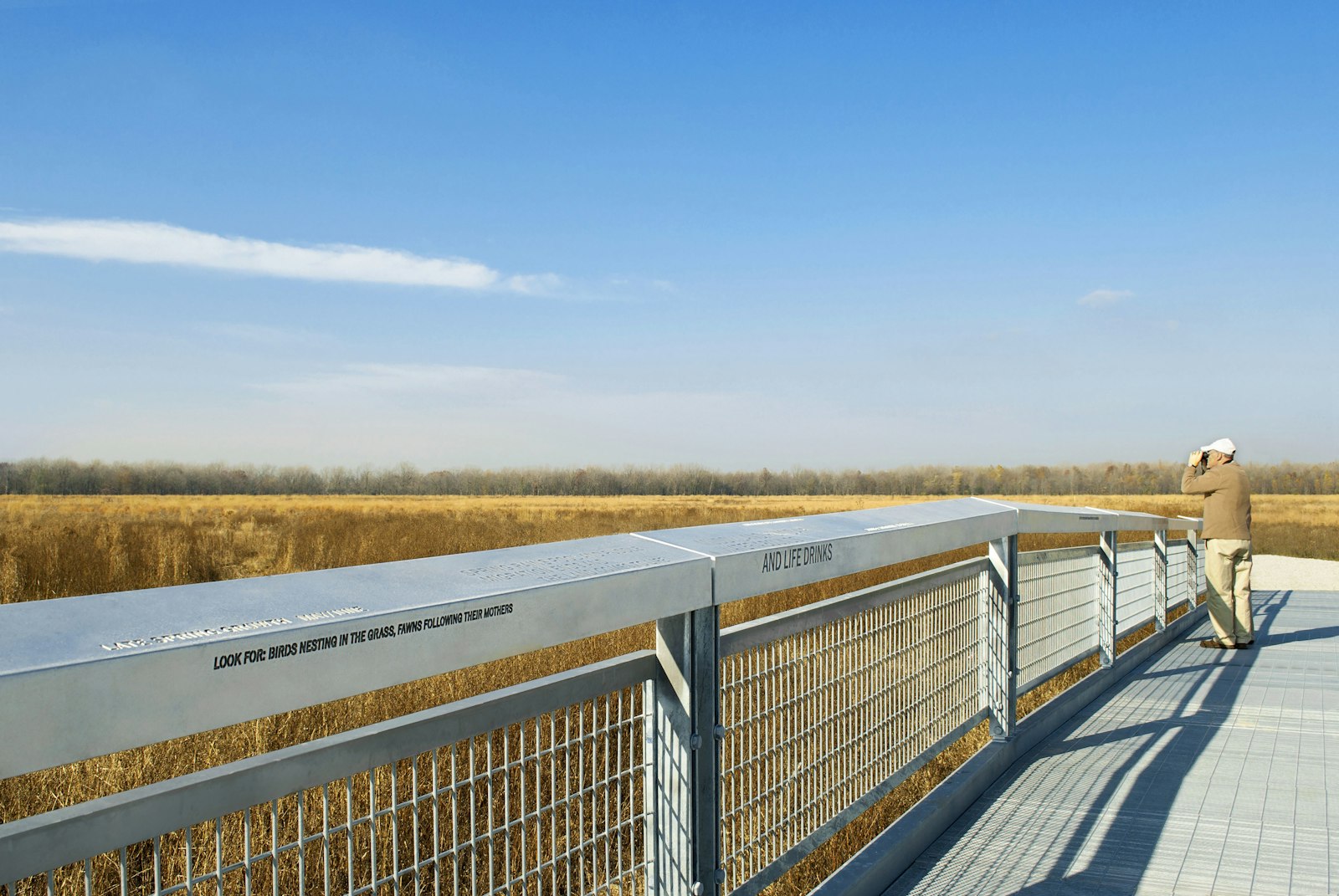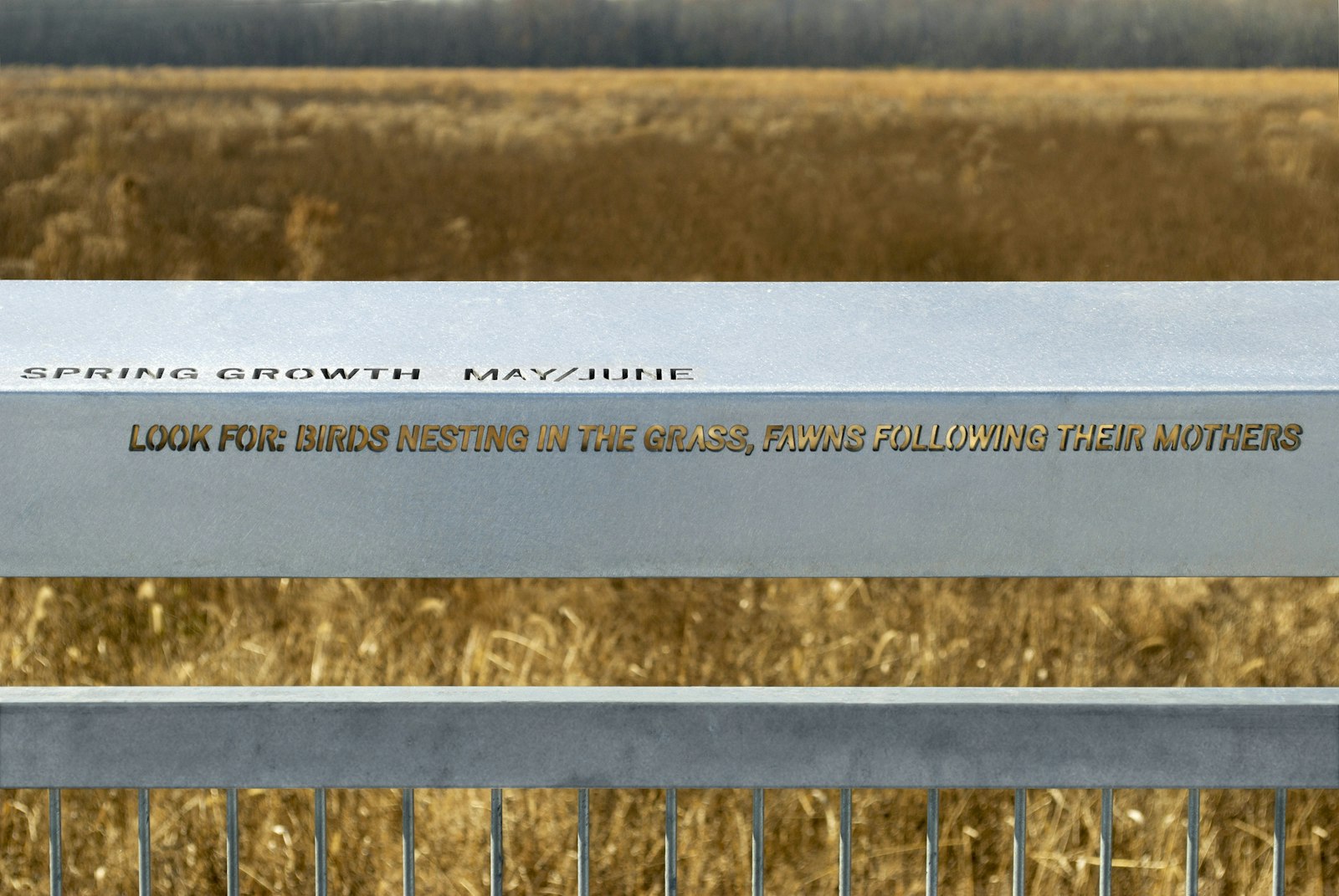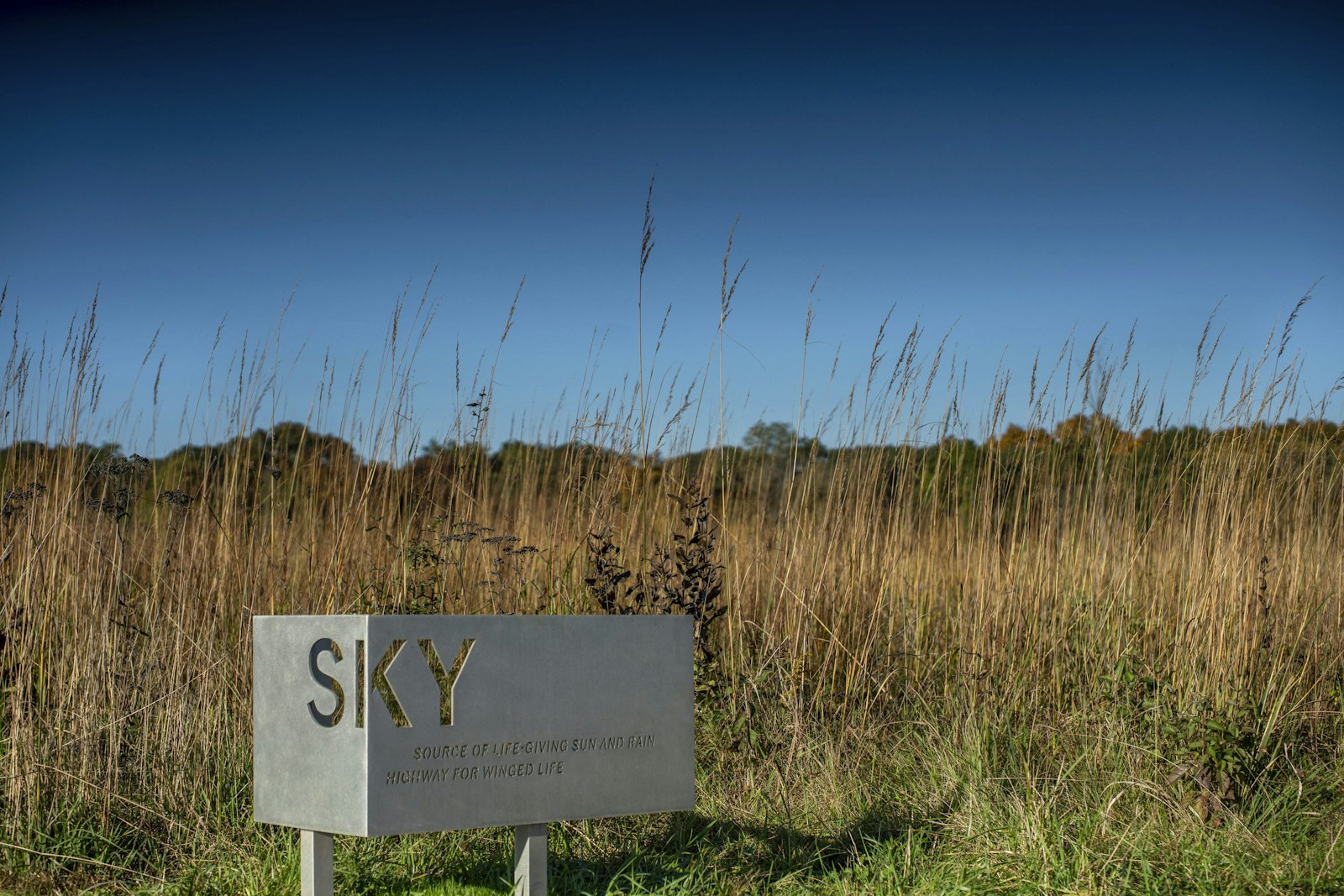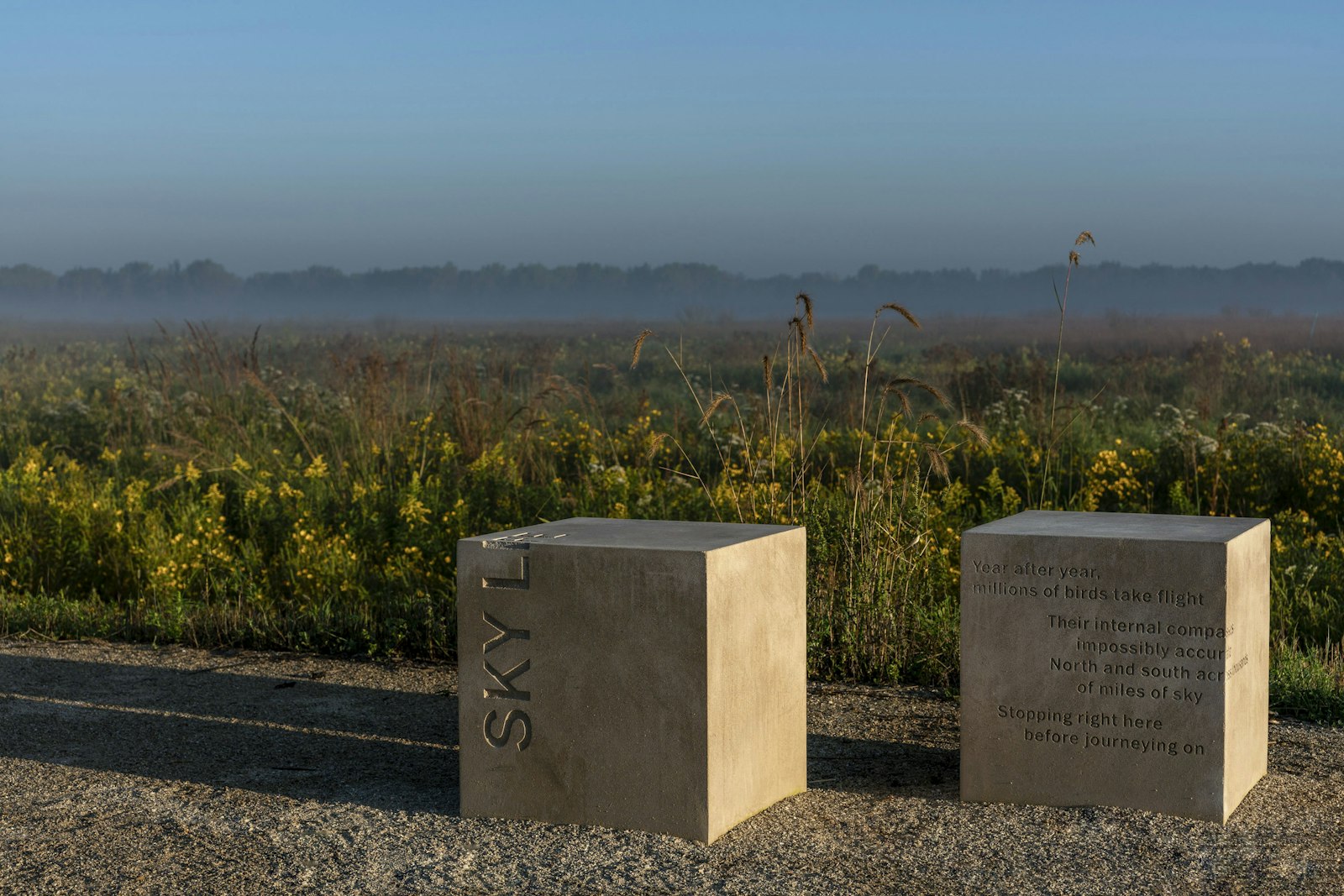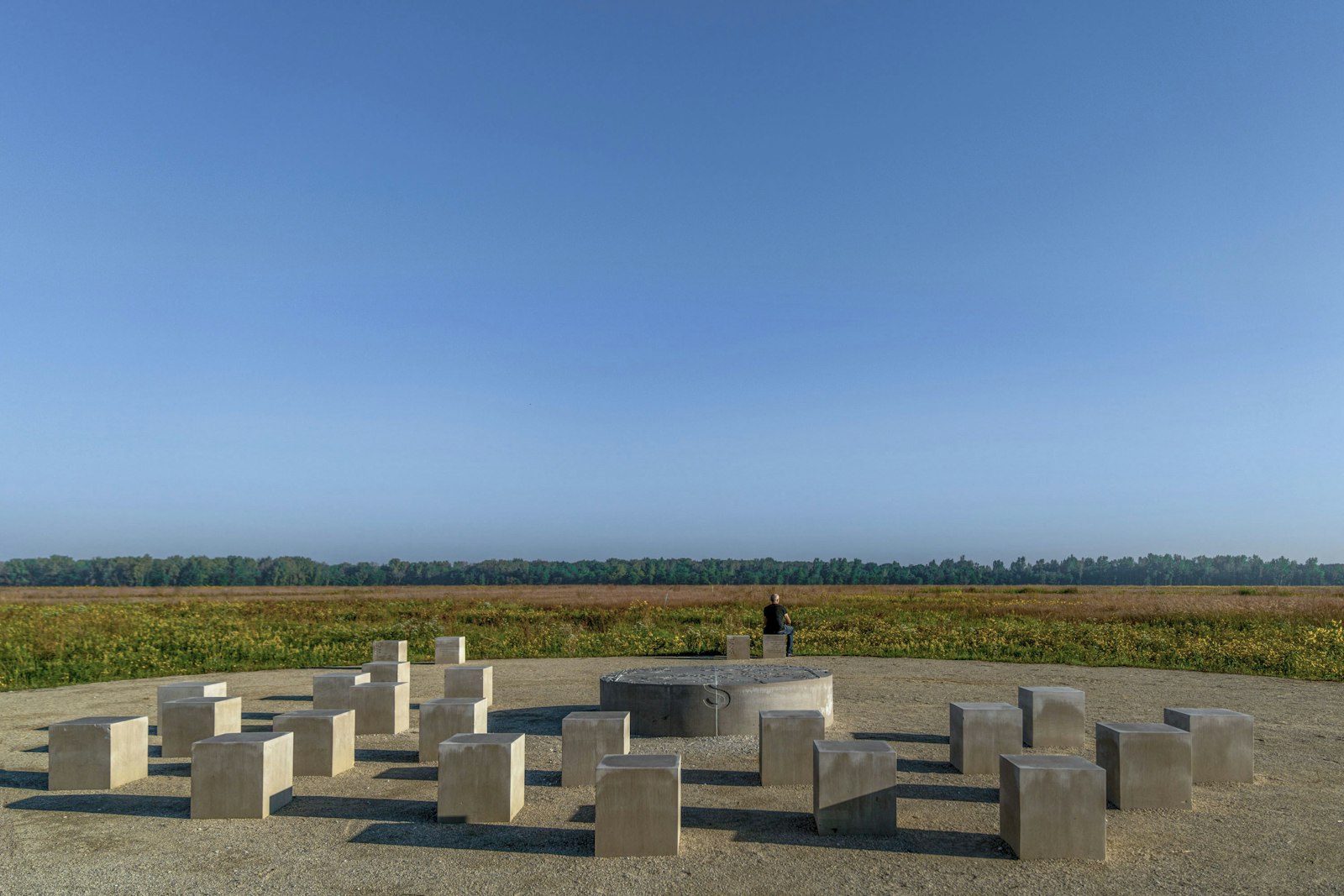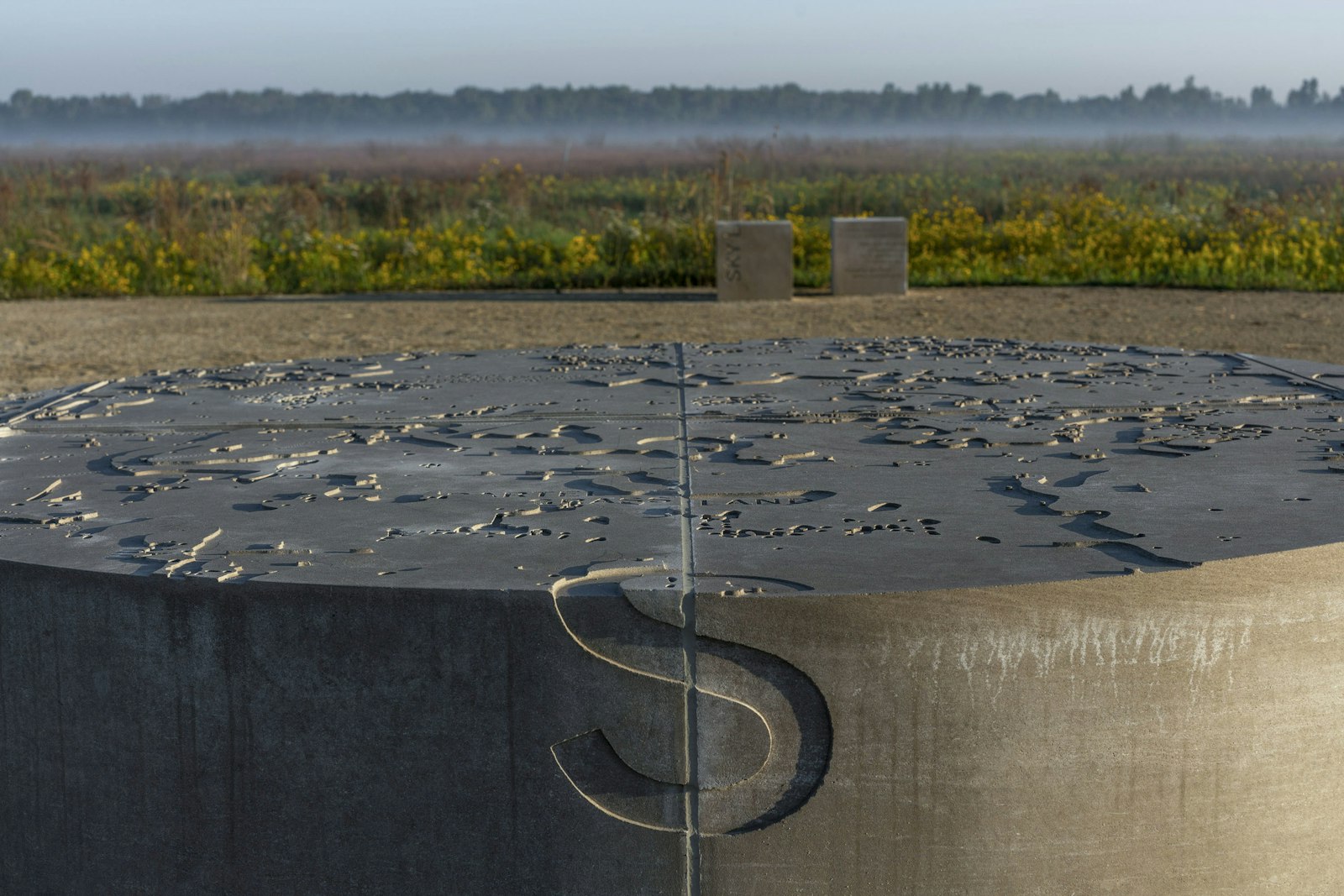This project was commissioned by the Cook County Forest Preserves — an ecologically diverse group of open spaces in one of the most densely populated counties in the United States — to commemorate the preserves’ centennial and help the region envision alternative possibilities for the future. To develop the project, the design team worked with a team of architects, naturalists, curators, and engineers to develop new models for preserve interpretation that go beyond conventional “show and tell” signage.
The project’s objectives include:
– commemorating the Forest Preserves’ centennial year by collaborating on the design of interpretive elements that position the Forest Preserve as forward-thinking and visionary;
– developing systems that can be repurposed, by creating formats for interpretive tools with a shared vocabulary that can be replicated or adapted at other preserves;
– demonstrating the Forest Preserve’s commitment to environmental stewardship by working toward reduction of the human presence;
– developing elements that keep the site as undeveloped and remote in feeling as possible; and
– connecting people to place — inspiring and engaging visitors by leading with the middle tenet of the Forest Preserve’s mission of education, pleasure, and recreation.
To accomplish these goals, the design team installed interpretive elements, including serial metal signs, stone benches and tables, metal bridge railings, and stone disks at multiple locations within each forest preserve. These elements draw visitors’ attention to natural themes of land, sky, and water, while serving as experiments in interpreting these special sites’ unique topography. Large stone tables contain topographic and trail maps, bent metal signs announce each interpretive node, bridges span swamps, and stone benches and disks provide information about the surrounding ecosystem. By design, the materials and forms are experiential and secondary to nature — prompting both curiosity and reflection.
The interpretive trails combine social innovation, typographic craft, and material experimentation to support local ecologies and economies and improve the human experience. The restoration of the Deer Grove Preserve (of which the interpretive trail is a part) has not only contributed to the local economy in the short term but is also expected to yield long term economic gains from increased visitation, outdoor recreation, and the improved quality of water and other natural resources.
- Creative director, Studio Blue
- Cheryl Towler Weese
- Senior designer, Studio Blue
- J. Brad Sturm
- Senior designer, Studio Blue
- Hillary Geller
- Designer, Studio Blue
- Tuan Pham
- Photography credits, Studio Blue
- Tom Rossiter
- Principal, Wheeler Kearns Architects
- Dan Wheeler
- Principal, Wheeler Kearns Architects
- Mark Weber
- Project architect, Wheeler Kearns Architects
- Thomas Boyster
- Project architect, Wheeler Kearns Architects
- Noah Luken
- Principal, Naturalia, Inc.
- Lisa Roberts
- President and CEO, Openlands
- Gerald Adelmann
- Executive vice president, Openlands
- Robert Megquier
- Restoration specialist, Openlands
- Linda Masters
- Chief landscape architect, Forest Preserves of Cook County
- David Kircher
- Chief construction engineer, Forest Preserves of Cook County
- Adnan Nammari
- Project manager, R.M. Chin Associates
- Paul Sefcovic
- Site development practice leader, WBK Engineering
- Chris Lindley
- Chicago Commercial Construction (GC)
- Stone carving
- Walter S. Arnold
- Masonry
- Gary Galassi Stone and Steel
- Signage
- DeSign Group Signage
